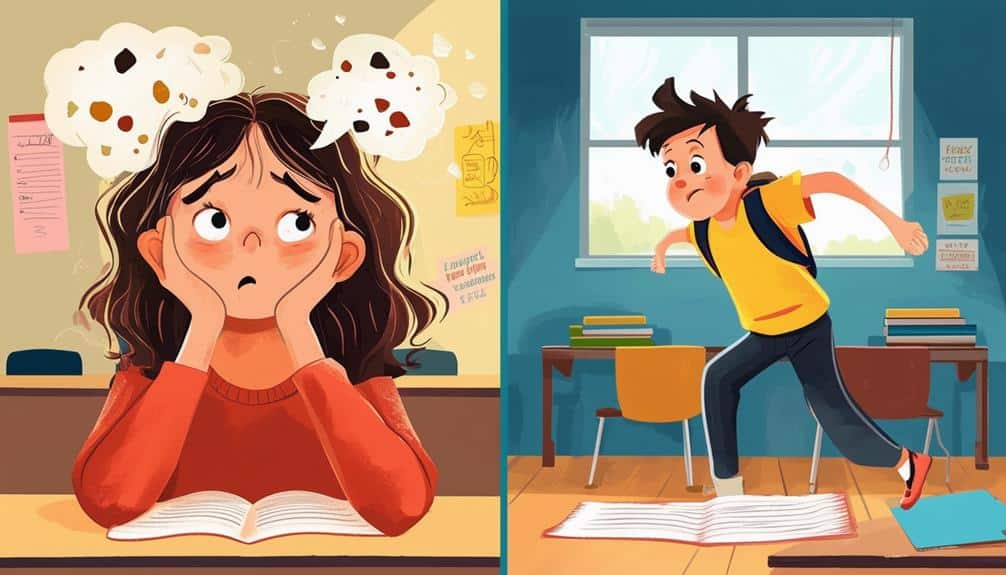
Introduction
Attention-Deficit/Hyperactivity Disorder (ADHD) is one of the most common neurodevelopmental conditions, affecting both children and adults worldwide. The condition is often characterized by patterns of inattention, hyperactivity, and impulsivity that can significantly impact daily life, school performance, and relationships. Understanding ADHD behavior is essential not only for individuals living with the condition but also for parents, teachers, and employers who interact with them. This article explores the key aspects of ADHD behavior, its symptoms, possible causes, and effective management strategies.
What Is ADHD Behavior?
ADHD behavior refers to a range of patterns that arise due to differences in brain development and functioning. These behaviors are not signs of laziness or lack of intelligence. Instead, they reflect challenges in the brain’s ability to regulate attention, control impulses, and manage activity levels.
Typical ADHD behaviors include:
- Difficulty focusing on tasks for long periods.
- Acting impulsively, such as interrupting conversations or making quick decisions without thinking.
- Excessive physical activity (in children) or inner restlessness (in adults).
- Trouble organizing tasks, managing time, and completing responsibilities.
Core Symptoms of ADHD Behavior
1. Inattention
People with ADHD often struggle with sustained attention. Examples include:
- Forgetting instructions or deadlines.
- Becoming easily distracted by external noises or thoughts.
- Having difficulty organizing tasks, leading to incomplete work.
- Losing items such as keys, notebooks, or phones.
2. Hyperactivity
Hyperactivity is more noticeable in children, though adults may experience it as internal restlessness. It may involve:
- Constant fidgeting or tapping hands and feet.
- An inability to sit still in quiet settings.
- Talking excessively without recognizing social cues.
3. Impulsivity
Impulsive behavior can create challenges in social and academic contexts:
- Interrupting others during conversations.
- Difficulty waiting for one’s turn.
- Making hasty decisions, sometimes leading to financial or personal problems.
ADHD Behavior in Children vs. Adults
- Children often show their ADHD behavior in classrooms, where they may struggle to follow rules, pay attention, or complete assignments. Teachers may notice restlessness, forgetfulness, or disruptive actions.
- Adults, on the other hand, may display ADHD through chronic disorganization, poor time management, relationship difficulties, or impulsive financial decisions.
It’s important to note that ADHD does not disappear with age; rather, its expression changes.
Causes Behind ADHD Behavior
The exact causes of ADHD are still being studied, but several factors play a role:
- Genetics – ADHD tends to run in families.
- Brain structure and chemistry – Differences in dopamine regulation and brain development contribute to behavioral symptoms.
- Environmental factors – Exposure to toxins (like lead), premature birth, or prenatal alcohol/tobacco exposure may increase risk.
- Neurodevelopmental delays – Certain brain areas mature more slowly, impacting self-control and attention regulation.
How ADHD Behavior Affects Daily Life
- At school/work: Struggles with deadlines, organization, and task completion can lead to poor performance.
- In relationships: Impulsivity and distractibility can cause misunderstandings with family, friends, or partners.
- Mental health: Many individuals with ADHD also face anxiety, depression, or low self-esteem due to ongoing challenges.
Effective Management of ADHD Behavior
1. Medical Treatment
- Stimulant medications (like methylphenidate or amphetamines) are often prescribed to improve focus and reduce impulsivity.
- Non-stimulant options are available for those who do not respond well to stimulants.
2. Behavioral Therapy
- Helps individuals develop coping skills, improve organization, and reduce impulsive actions.
- Parent training can guide families on managing children’s ADHD behavior positively.
3. Lifestyle Strategies
- Structured routines: Keeping a consistent daily schedule improves productivity.
- Physical exercise: Reduces hyperactivity and boosts mood.
- Healthy diet and sleep: A balanced lifestyle supports better focus and emotional regulation.
4. Academic and Workplace Support
- Children may benefit from Individualized Education Programs (IEPs) or 504 Plans.
- Adults may use planners, reminders, or ADHD-specific productivity apps.
Myths and Misconceptions About ADHD Behavior
- “ADHD is just bad parenting.” False — ADHD is a neurodevelopmental condition, not a result of poor discipline.
- “Only children have ADHD.” False — ADHD continues into adulthood in many cases.
- “People with ADHD can’t succeed.” False — With proper support and strategies, individuals with ADHD can thrive in academics, careers, and personal life.
Conclusion
ADHD behavior is a complex mix of inattention, hyperactivity, and impulsivity that varies in severity and presentation across individuals. While it presents challenges in daily life, understanding its causes and learning effective management techniques can transform these difficulties into manageable aspects of life. By raising awareness and breaking misconceptions, society can create supportive environments where individuals with ADHD can succeed and reach their full potential.
✅ “Ready to improve focus and productivity? Get your ADHD planner here!”